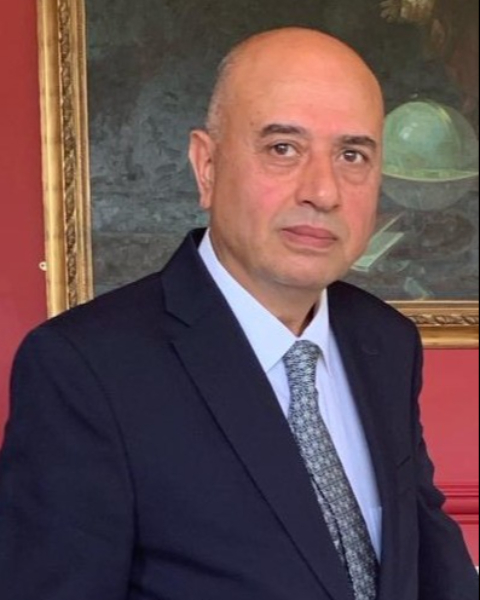Quick Fire Cases
Primary Cardiac Lymphoma masquerading as hypertrophic cardiomyopathy: The diagnostic value of cardiovascular magnetic resonance and assessing response to treatment. (QF_TH_044)
- MA
Maryam M A M M Alenezi, MD, PhD
CMR fellow
RBH, United Kingdom - MA
Maryam M A M M Alenezi, MD, PhD
CMR fellow
RBH, United Kingdom 
Raad Mohiaddin, MD, PhD
MBBS
Royal Brompton & Harefield NHS Foundation Trust, United Kingdom
Presenting Author(s)
Primary Author(s)
Co-Author(s)
A 70-year-old man with a past history of hypertension and chronic kidney disease, who initially presented to his local hospital with symptoms of exertional chest pain and breathlessness. He underwent initial, routine, investigations with ECG showing a normal sinus rhythm with diffuse T wave inversion and TTE, revealing the presence of asymmetrical septal hypertrophy with a normal LVEF of 63%. He was discharged to an outpatient clinic with the presumptive diagnosis of hypertrophic cardiomyopathy, awaiting further investigations in the form of a CMR scan and Holter monitoring. Two weeks later, he re-presented to his local hospital with sudden onset of palpitations. ECG showed atrial flutter with 2:1 AV block. This reverted back to sinus rhythm after intravenous beta-blocker. Troponin was elevated and the patient subsequently underwent a coronary angiogram, which showed non-obstructive coronary artery disease. He was commenced on an anticoagulant for the episode of atrial flutter and was discharged from hospital for follow-up, as initially planned. However, some days later, he presented once again to his hospital with palpitations and worsening of his breathlessness. He was febrile and showed signs of heart failure. ECG showed atrial flutter with RBBB and laboratory test showed elevated inflammatory markers. Repeat TTE showed a significant reduction of his LVEF to 29% and the presence of a right atrial mass. He subsequently underwent an urgent CMR scan and was referred to The Royal Brompton Hospital Heart Failure Multi-disciplinary team for review of his imaging and advice on how proceed. On admission, the patient was asymptomatic, and his physical examination was unremarkable. Laboratory workup showed an elevated troponin, NT- Pro-BNP (1639 ng/L) and inflammatory markers. Empirical intravenous antibiotics were started, however a septic screen including blood cultures were later unremarkable.
Diagnostic Techniques and Their Most Important Findings:
CMR imaging revealed a large, diffuse and infiltrative soft tissue mass predominantly involving RV free wall and inferior walls. This followed the RCA atrioventricular and the posterior descending artery grooves encasing but not obstructing these arteries proximally. The mass irregularly protruded into the RV cavity and partially extended into adjacent part of right atrial wall and to the base of the anterior leaflet of tricuspid valve but there was no significant tricuspid valve obstruction or regurgitation. Additionally, there was infiltration of the left ventricular apex, apical lateral wall and parts of the interventricular septum but this was to a lesser extent than the RV involvement. Compared with the normal myocardium, the infiltrative tissue was isointense on T1W Spin-echo images, hyperintense on T2W images and appeared markedly heterogeneously enhanced on the early and late post gadolinium-based contrast agent images. T1 and T2 values of the abnormal tissue were also abnormally elevated (~1200ms and ~58ms at 1.5T, respectively). The overall appearance and MRI signal characterization of the infiltrative tissue looked typical for a diffuse large B-cell lymphoma (DLBCL) of the heart.
Learning Points from this Case:
- The clinical symptoms of primary cardiac lymphoma are nonspecific and related to the location of the tumour.
- CMR imaging has a significant diagnostic value for the signal characteristics of tissue components within tumours, the anatomy and functional impact of a cardiac or juxtacardiac mass non invasively.
- The utility of multimodality cardiac imaging in the diagnosis of cardiac masses.

